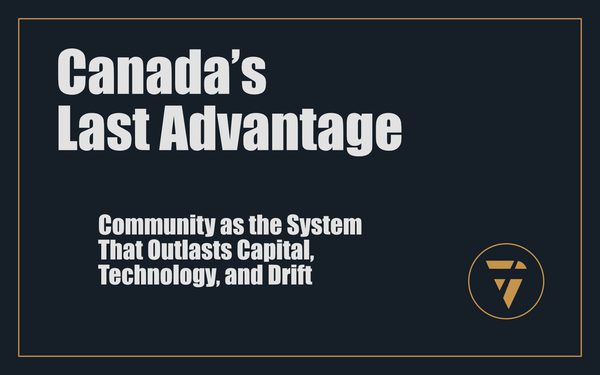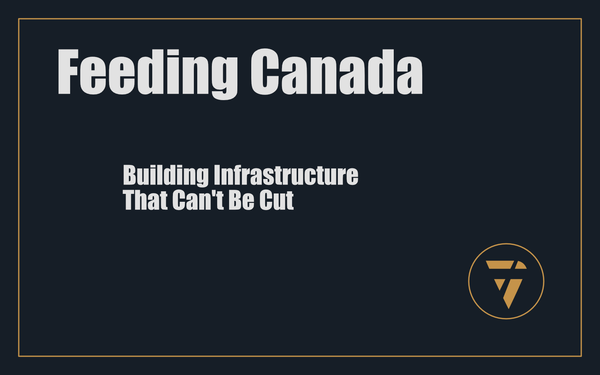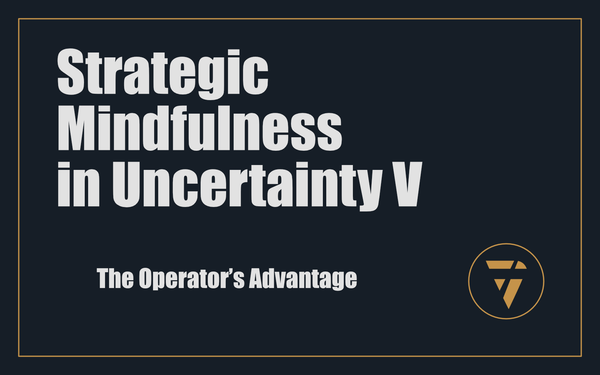The Road to Economic Renewal

A Step-by-Step Guide to Community Transformation
Many communities—especially in rural, remote, and underserved regions—find themselves trapped in a cycle of economic stagnation. Businesses struggle to stay afloat, young talent leaves for better opportunities elsewhere, and local governments face shrinking tax revenues with no clear strategy for recovery.
But decline is not inevitable. Towns and regions that take a structured, strategic approach to economic revitalization can break free from stagnation, and build sustainable, thriving economies. This transformation doesn't happen by chance, it requires deliberate planning, strong partnerships, and strategic investment in local businesses, workforce development, and infrastructure.
Manitou Economic Development Agency (MEDA) has developed a proven blueprint for turning struggling communities into growth hubs. This provides a step-by-step breakdown of how this transformation works, the key benchmarks that signal success, and real-world examples from communities that have successfully implemented these models.
1. The MEDA Community Success Blueprint
Revitalizing a struggling town requires more than attracting new businesses or securing short-term grants. Sustainable economic growth comes from a structured, long-term plan that builds on local strengths and addresses foundational weaknesses.
Step 1: Strategic Economic Assessment
Every community is unique, with its own economic history, strengths, and challenges. The first step is conducting a comprehensive economic assessment to understand:
- What industries are present, and which are in decline?
- What businesses and sectors have growth potential?
- What barriers prevent local businesses from expanding?
- What infrastructure or policy gaps exist that hinder investment?
- What workforce skills are available, and where are the gaps?
This assessment sets the foundation for all future economic development efforts. Without a clear, data-driven understanding of the local economy, any growth strategy will be misguided and ineffective.
Step 2: Partnership Formation and Stakeholder Engagement
Economic development cannot be a solo effort. Success requires aligning key stakeholders—local governments, businesses, investors, and community organizations—into a shared vision for growth.
MEDA facilitates this process by:
- Bringing together business owners, municipal leaders, and investors for strategic planning sessions.
- Identifying industries or sectors where collaborative investment can have the biggest impact.
- Engaging regional economic development agencies to provide additional expertise and resources.
- Creating industry partnerships to ensure that workforce development efforts align with real job opportunities.
A well-organized, unified approach builds investor confidence and makes it easier to secure funding for key projects.
Step 3: Funding Access and Investment Strategy
One of the biggest obstacles to economic revitalization is securing the necessary funding. Many towns struggle because they rely on only one or two funding sources, such as municipal budgets or government grants. A successful growth strategy requires a layered funding model that combines:
- Government grants and infrastructure funding
- Private sector investment and business incentives
- Public-private partnerships for major projects
- Regional investment funds to pool capital across multiple businesses
MEDA specializes in structuring investment strategies that ensure projects are not only funded, but are also financially sustainable over the long term.
Step 4: Infrastructure Development and Policy Reform
For a community to become a growth hub, it must have the physical and regulatory infrastructure to support business expansion. This step focuses on:
- Upgrading transportation networks and logistics capabilities
- Expanding broadband access to support digital business growth
- Reforming outdated zoning and permitting policies that slow investment
- Developing commercial and industrial spaces to attract new enterprises
Many communities miss opportunities for investment simply because they lack the basic infrastructure or policies needed to support business expansion. MEDA works with municipalities to fast-track these critical improvements.
Step 5: Business Retention, Expansion, and Workforce Development
Attracting new businesses is only one part of economic growth. The more immediate impact comes from strengthening and expanding the businesses that are already there. MEDA focuses on:
- Providing direct advisory and mentorship to small business owners.
- Connecting businesses with funding opportunities and expansion strategies.
- Building workforce training programs tailored to industry needs.
- Helping businesses adopt digital tools, e-commerce, and automation to scale their operations.
When existing businesses grow and hire more workers, the community becomes more attractive to outside investors.
Step 6: Long-Term Economic Monitoring and Adaptation
Economic development is not a one-time project, it's an ongoing process that requires constant monitoring and adaptation. MEDA implements:
- Quarterly progress reviews with stakeholders.
- Economic impact assessments to track job creation and business growth.
- Adjustments to strategy based on new opportunities or challenges.
This ensures that economic momentum is maintained and that the community doesn't fall back into stagnation.
2. Key Benchmarks for Community Transformation
A successful economic turnaround can be measured by clear, tangible benchmarks. Communities that follow MEDA’s blueprint typically see:
- A 20–50 percent increase in local business revenues within the first three years.
- New business formation rates rising significantly.
- Higher workforce participation and lower unemployment rates.
- Increased private sector investment in local development projects.
- Improved infrastructure ratings, including broadband access and transportation networks.
These benchmarks indicate that a community has transitioned from decline to growth.
3. Community Building: Success in Action
Case Study 1: Revitalizing a Manufacturing Town
A small town that once thrived on resource-based manufacturing had seen its economy decline due to plant closures and job losses. The town:
- Secured funding to modernize old industrial facilities.
- Attracted new businesses by offering targeted tax incentives.
- Launched a workforce training program to reskill former manufacturing workers for new industries.
Result: New jobs were created, and industrial output rebounded.
Case Study 2: Turning a Rural Community into a Tourism Hub
A rural region with natural tourism potential lacked the infrastructure and investment to capitalize on its assets. They started by:
- Developing a regional investment fund to build tourism lodges and experiences.
- Partnering with local Indigenous entrepreneurs to create authentic cultural attractions.
- Implementing a marketing campaign to attract visitors from major cities.
Result: Tourism revenue increased, and seasonal employment expanded into year-round jobs.
Case Study 3: Digital Transformation in an Agricultural Community
A farming-based town was struggling with low commodity prices and outdated supply chains. This approach included:
- Investing in precision agriculture technology and digital marketplaces.
- Creating co-op business models to improve farmers’ negotiating power.
- Expanding broadband to allow farms to access online markets and logistics platforms.
Result: Farm revenues increased, and young entrepreneurs began returning to the community.
The Path from Struggling to Thriving
Economic transformation is possible for any community willing to take a structured, strategic approach. With the right mix of assessment, partnerships, funding access, and business expansion strategies, even struggling towns can become dynamic growth hubs.
MEDA’s model has proven results, turning stagnant economies into sustainable engines of prosperity. Who's ready to rebuild and grow?
This is what I’m working on. Tell me what you think, I enjoy the conversation! Subscribe and follow the work in real time.
Thanks!
B

Struggling communities don’t need vague promises, they need a real strategy. Economic transformation happens through targeted investment, business expansion, and infrastructure development. The blueprint is proven. Who’s ready to rebuild and grow?
PS -






